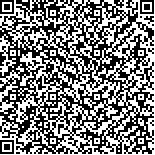惠志崇,戚伟航,张一,等.Lokomat和Relink下肢康复机器人训练对痉挛型脑瘫患儿运动功能影响的比较[J].中华物理医学与康复杂志,2024,46(6):512-517
扫码阅读全文

|
| Lokomat和Relink下肢康复机器人训练对痉挛型脑瘫患儿运动功能影响的比较 |
|
| |
| DOI:10.3760/cma.j.issn.0254-1424.2024.06.005 |
| 中文关键词: 痉挛型脑瘫 下肢康复机器人 运动功能 疗效 |
| 英文关键词: Spastic cerebral palsy Cerebral palsy Robots Motor function Therapeutic effectiveness |
| 基金项目:河南省重点研发与推广专项(232102310135) |
|
| 摘要点击次数: 2858 |
| 全文下载次数: 4067 |
| 中文摘要: |
| 目的 探讨Lokomat和Relink下肢康复机器人训练对粗大运动功能分级(GMFCS)II~III级痉挛型脑瘫(SCP)患儿下肢运动功能的影响。 方法 采用随机数字表法将28例SCP患儿分为对照组和试验组,每组14例。2组患儿均给予常规康复疗法,包括运动疗法、石蜡疗法、神经肌肉电刺激和推拿疗法,在此基础上对照组和试验组分别给予Lokomat和Relink下肢康复机器人辅助的步态训练(RAGT),每日1次,每周5 d,持续8周。治疗前、治疗8周后(治疗后),采用粗大运动功能量表(GMFM)、儿童平衡量表(PBS)、改良Tardieu量表(MTS)、自选步行速度(SWS)、6 min步行测试(6MWT)、生理消耗指数(PCI)对2组患儿进行疗效评定。 结果 治疗后,2组患儿的GMFM-D、E区和PBS评分,损伤侧踝关节MTS R1、R2角度,SWS、6MWT、PCI均较组内治疗前显著改善(P<0.05)。2组患儿治疗后GMFM-D、E区和PBS评分比较,差异无统计学意义(P>0.05)。试验组治疗后损伤侧踝关节MTS R1[(12.04±3.62)°]、R2[(18.84±2.00)°],SWS[(32.44±4.26)m/min]、6MWT[(182.36±35.96)m]、PCI(0.33±0.19)均较对照组改善优异,差异有统计学意义(P<0.05)。 结论 常规康复疗法联合Lokomat或Relink下肢康复机器人训练,均能有效改善GMFCS II~III级SCP患儿的下肢运动功能。其中Relink下肢康复机器人在改善SCP患儿小腿三头肌痉挛和步行能力方面的效果更为优异。 |
| 英文摘要: |
| Objective To compare the effectiveness of two types of robotic training in improving the lower extremity motor functioning of children with spastic cerebral palsy (SCP). Methods Twenty-eight children with SCP were randomly divided into a control group and an experimental group, each of 14. Both groups received conventional exercise therapy, paraffin therapy, neuromuscular electrical stimulation, and massage. Both also performed 30 minutes of gait training five days a week for eight weeks assisted by either a Lokomat or a Relink lower limb rehabilitation robot. Before and after the treatment, both groups were evaluated using the Gross Motor Function Measure (GMFM), the Pediatric Balance Scale (PBS), the Modified Tardieu Scale (MTS), the six-minute walk test (6MWT), the Physiological Cost Index (PCI) and their self-selected walking speed (SWS). Results Significant improvement in all of the measurements were observed in both groups. After the treatment, there were no significant differences between the two group in the average GMFM (section D and E) or PBS scores. The average MTS R1 and R2, SWS, 6MWT and PCI results of the experimental group were, however, significantly better than those of the control group. Conclusion Applying either the Lokomat or Relink robot in lower extremity rehabilitation improves the lower extremity motor function of children with grade II-III SCP. The Relink robot is the more effective in improving triceps surae spasm and walking ability. |
|
查看全文
查看/发表评论 下载PDF阅读器 |
| 关闭 |